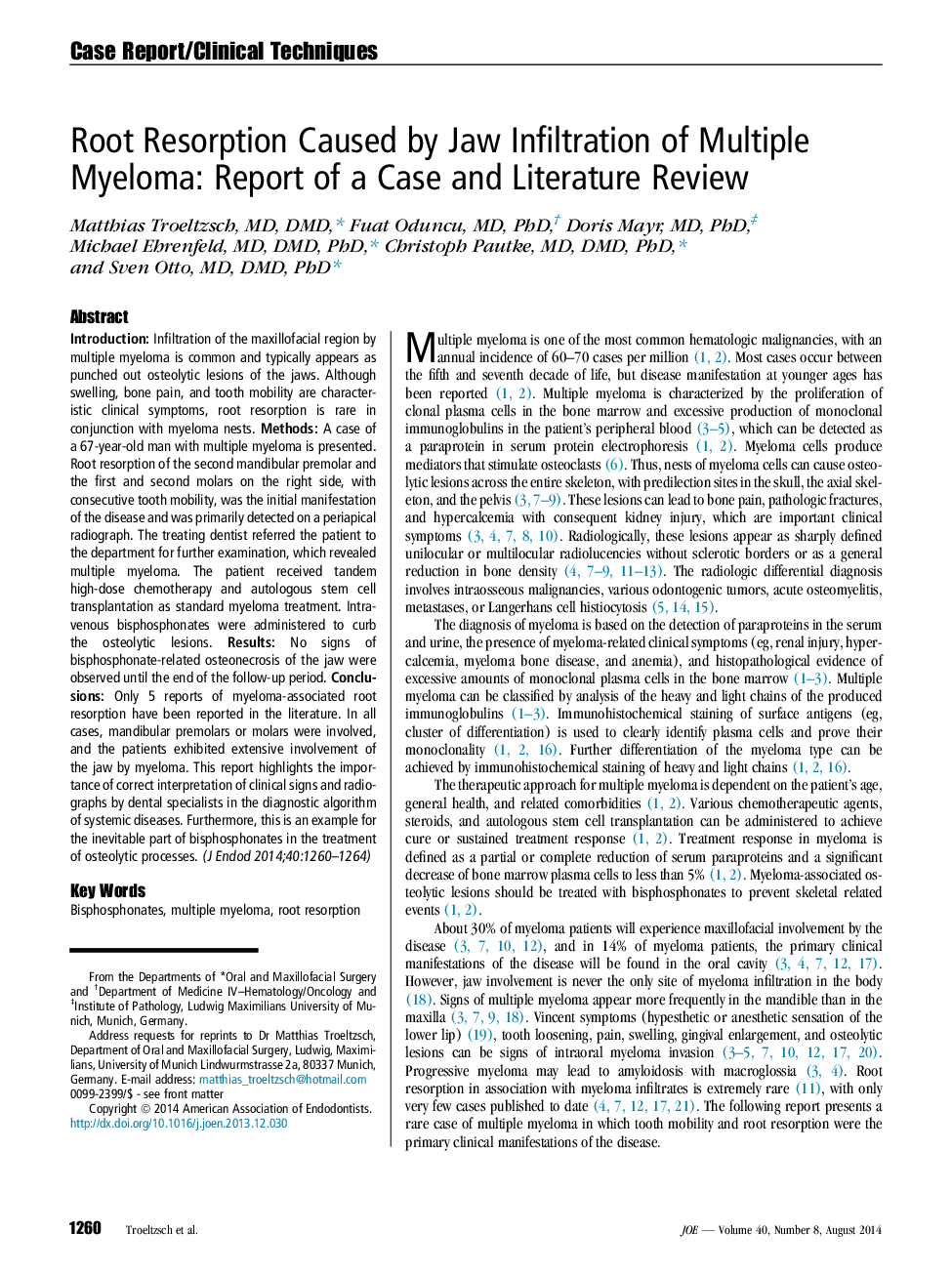| کد مقاله | کد نشریه | سال انتشار | مقاله انگلیسی | نسخه تمام متن |
|---|---|---|---|---|
| 3146762 | 1197315 | 2014 | 5 صفحه PDF | دانلود رایگان |

IntroductionInfiltration of the maxillofacial region by multiple myeloma is common and typically appears as punched out osteolytic lesions of the jaws. Although swelling, bone pain, and tooth mobility are characteristic clinical symptoms, root resorption is rare in conjunction with myeloma nests.MethodsA case of a 67-year-old man with multiple myeloma is presented. Root resorption of the second mandibular premolar and the first and second molars on the right side, with consecutive tooth mobility, was the initial manifestation of the disease and was primarily detected on a periapical radiograph. The treating dentist referred the patient to the department for further examination, which revealed multiple myeloma. The patient received tandem high-dose chemotherapy and autologous stem cell transplantation as standard myeloma treatment. Intravenous bisphosphonates were administered to curb the osteolytic lesions.ResultsNo signs of bisphosphonate-related osteonecrosis of the jaw were observed until the end of the follow-up period.ConclusionsOnly 5 reports of myeloma-associated root resorption have been reported in the literature. In all cases, mandibular premolars or molars were involved, and the patients exhibited extensive involvement of the jaw by myeloma. This report highlights the importance of correct interpretation of clinical signs and radiographs by dental specialists in the diagnostic algorithm of systemic diseases. Furthermore, this is an example for the inevitable part of bisphosphonates in the treatment of osteolytic processes.
Journal: Journal of Endodontics - Volume 40, Issue 8, August 2014, Pages 1260–1264